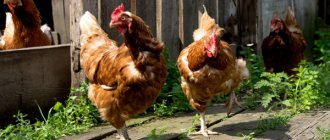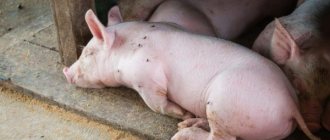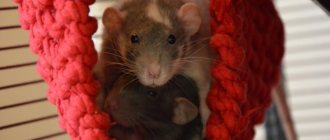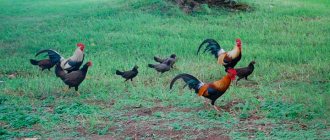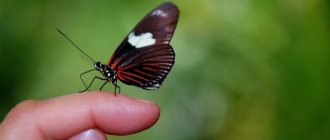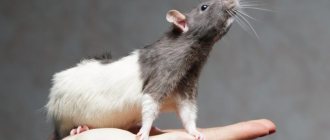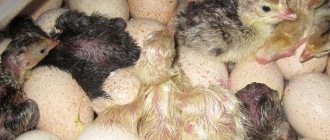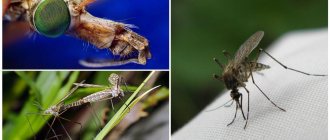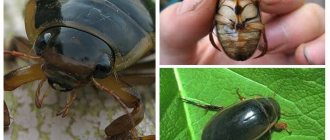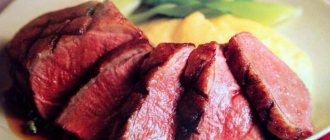Home » Articles about pigeons » How long do pigeons live at home?
The question of how long pigeons live does not have a clear answer, since this period is largely determined by the environment and living conditions. For example, birds of southern latitudes have a better chance of long life than those that live in cold climates, and domestic birds live longer than their relatives from parks and squares.
How long do pigeons live?
Pigeons are found everywhere. They can live both in megacities and in villages or small towns. Some species live only in the wild. There are also decorative breeds that are kept at home.
Experts report how long pigeons live. This period is 3-15 years. It directly depends on many factors (habitat, diet, presence of natural enemies, etc.).
Enemies in nature
In natural conditions, pigeons have plenty of enemies. First of all, these are other feathered predators that attack them right in the air: falcon, eagle,
hawk, kite and some other birds. On the ground, terrestrial predators are waiting for them: martens, ferrets, foxes and, of course, ordinary domestic cats.
What factors influence life expectancy
Many factors influence how many years different types of pigeons live. This period depends on living conditions, lifestyle, and climate. It is known that birds in the wild live much less than their domestic counterparts.
Habitat
Climatic conditions and habitat directly affect how long pigeons live. In cold regions, wild birds live shorter lives, as they often die from cold or lack of food.
INTERESTING! It is easier for individuals living in cities to find a warm place to winter, so these birds live longer than those living in the wild.
Owners provide pets with a warm room at a comfortable temperature. For this reason, even in severe frosts they do not die from the cold.
Lifestyle
Free birds are forced to constantly look for safe places to build nests and protect them from predators. Domestic pigeons live in comfortable conditions, which is why their lifespan is noticeably longer.
Nutrition
How long wild or domestic pigeons live is affected by their diet. In nature, they feed only on what they can find on their own.
During the warm season, they have no shortage of food. In summer they feed on berries, seeds, herbs, and insects.
During the cold season, the amount of food available to birds is sharply reduced. Lack of food leads to vitamin deficiencies and weakened immunity. Birds become more susceptible to various diseases and often die due to lack of food.
Birds living in cities rarely go hungry. They can find food in feeders, in garbage containers, in markets, near bus stops. However, such an unbalanced diet can lead to indigestion and other diseases, which shortens life expectancy.
Domesticated individuals live the longest. They receive a fully balanced diet throughout the year. Owners change the composition of feed depending on age and condition.
Health
How many years pigeons live is influenced by the functioning of the immune system. Birds living in the wild often encounter various viruses and infections, which can kill the entire flock in a short time.
Outdoor birds rarely encounter such diseases, since they have almost no contact with migratory and wild birds. Their health and lifespan are often negatively affected not by infections, but by their diet.
INTERESTING! Domestic birds live up to 15 years, but only if the owners comply with all sanitary standards, treat the birds for parasites and monitor their health.
Natural enemies
How long free pigeons live is influenced by the presence of natural or natural enemies. They are hunted by predators such as golden eagles, owls, eagle owls, peregrine falcons, kestrels, etc. They also die in the teeth of foxes, opossums, and raccoons. In cities they are hunted by stray dogs or cats.
Domestic pigeons are rarely killed by predators. However, in villages and towns they may be attacked by kites or peregrine falcons. This happens if the pen is not protected on all sides by a strong net.
Lifestyle
If you observe a little the behavior of ordinary city pigeons, you will notice that these birds have a very pugnacious character. It often happens that larger individuals drive their smaller relatives away from food without ceremony. Clashes between pigeons are also common, sometimes leading to death.
And here the dove “teaches life” to the sparrow.
Otherwise, pigeons spend all their time either sitting on tree branches (or poles, roofs of houses, high-voltage power lines) or looking for a snack.
Habitat and average life expectancy of pigeons
The average life expectancy of wild and domestic pigeons depends not only on their diet and lifestyle, but also on their habitat. These birds are distributed throughout the world, but in warm regions they live much longer.
Where do pigeons live
Not everyone knows where street pigeons live and in what places they hide from bad weather, cold or heat.
These birds find refuge in the following places:
- recesses in wooden or stone buildings;
- trees with a dense crown;
- attics of abandoned buildings;
- rafters and beams of houses;
- cornices or awnings;
- open balconies;
- depressions and niches in rocks.
Pigeons make nests not in trees, like other birds, but in closed, dark shelters. In the city, they choose abandoned attics or balconies, ventilation shafts, recesses in the walls of buildings, and bridge supports.
Homemade
Domestic pigeons are provided with special boxes in which the birds make their own nest. The length, width and height are 20-25 cm. For large livestock, boxes can be placed in one line.
INTERESTING! Special perches and wide shelves for relaxation are installed in the room.
At home, birds are not afraid of either disease or predators. Therefore, the question of how long such pigeons live can be answered: from 10 to 20 years. This period also depends on the conditions of detention and care.
Urban
The lifespan of street pigeons is on average 3-5 years. Such birds often seek shelter in attics, abandoned balconies or under bridges. They do not build full-fledged nests, but simply lay out several branches in a circle and lay eggs between them.
Wild
How long pigeons live in the wild is influenced by their habitat. On average, this period is 2-4 years. Some species live on the coast and in the mountains, while others prefer dense forests. Most of them adapt perfectly to any climatic conditions.
Wild pigeons choose open areas with a good view, but they build nests in secluded places: niches and depressions in rocks, tree hollows, caves, etc.
Home improvement
There are several requirements for the place where pigeons will live. Most important:
It is preferable to make two walls with large windows. Daylight hours for pigeons should last at least 14 hours.
Particular attention should be paid to bedding up to 5 cm thick:
Any bedding should be changed weekly.
Regardless of where the pigeon cage is located - in a special room, in an aviary or on a balcony - it should be convenient and comfortable. To do this, the home must be equipped with the following elements:
Pigeon cages and equipment should be washed periodically with a solution containing detergent. You can disinfect it once every six months - potassium permanganate, lime, and special preparations are suitable. Birds must be isolated during harvesting.
Keeping a pigeon in an apartment is more difficult than in a dovecote or on a balcony
It is important to properly equip the “house” and provide the bird with the opportunity to fly. The pigeon cage should be light and spacious
Birds need to be released periodically. Sporting and flying breeds should be allowed outside.
How to determine the age of a pigeon
Experts tell you how long pigeons live and how you can determine their age. Adults are considered to be individuals who are at least 3 years old. Until the age of 7, they remain in the best physical shape, after which their vitality decreases.
REFERENCE! At 9-10 years old, a pigeon is considered elderly. Such birds are no longer used for breeding.
The age of chicks and adults can be determined as follows:
- 6-7 days – plumage begins to appear;
- 9 days - the chick begins to see;
- 30 days – the fledging process is completed;
- 6 weeks - the chick begins to learn to fly;
- 7 weeks – the first molt occurs;
- 2-2.5 months – the chick stops squeaking and begins to coo;
- 5 months – the first sexual instincts appear;
- 7 months – completion of the first molt;
- 1 year – birds have bright plumage, legs and beak have no growths;
- 3-4 years - the plumage becomes duller, the cere enlarges and becomes pronounced, the surface of the paws becomes coarser;
- more than 5 years – the pigment weakens, the color fades.
Young birds can be distinguished by their behavior. They are very active, fly a lot, and coo. They have bright and smooth plumage, the wax does not have any rough growths. Old pigeons move slowly, their color is paler, and rough scales are noticeable on their legs.
Recorded records
The oldest pigeon in the world lives in Great Britain. In 2013, the bird was almost 25 years old, which makes it a real long-lived pigeon. The bird lived with Valerie Whittingham and was rescued by the woman more than 20 years ago.
The oldest pigeon in the world lives in the UK - in 2013 he was 25 years old.
This life expectancy can be explained by Mrs. Whittingham’s great care for her pets: they are provided with food, water, vitamins and good housing. There are no documented records of pigeons living longer than Valerie Whittingham's bird. Therefore, a 25-year-old bird can be considered the oldest. However, there is anecdotal evidence of pigeons supposedly living up to 35 years.
How to extend the life of a bird
The lifespan of domestic pigeons can be extended if the following conditions are met:
- balanced diet;
- free access to clean drinking water;
- a well-equipped room with nests, feeders and resting perches;
- regular disinfection;
- daily walks;
- quarantine for sick individuals.
No matter how long city birds live, this period can be extended if you feed them in the cold season and equip them with comfortable shelters from snow, rain and winds.
Reproduction
Pigeons are monogamous birds and create their families once and for all. While courting a female, the male spreads his tail, takes a stance, and in every possible way swells and spins around his chosen one. During this peculiar mating dance, pigeons coo. Sometimes a pair of love doves clean each other's wings and, touching their beaks, create some semblance of a kiss.
When a pair mates, the male mounts the female, maintaining balance with his wings. After this, a pair of pigeons builds a nest in some secluded place, where the female will soon lay eggs. In a year, a female can make up to 8 clutches, each of which will contain from 1 to several eggs.
The female hatches the eggs, although the male father can also replace her for a short time. Usually after 16-19 days, pigeon chicks are born, blind and with yellow down. In the first days, the parents feed them with burps from their crops, then they begin to produce seeds. Pigeon chicks grow and develop very quickly; within a month they acquire the ability to fly and become practically adult pigeons.
Record timing
As with any rule, in our case there is an exception - there are birds that live quite a long time. One of the record holders for life expectancy is a pigeon that lives in England. He is now over 25 years old. This bird did not live in the wild and was not a city pigeon; such a long life was provided to it by a woman named Valeria Whittingham. She picked up the bird on the street and was able to go out and feed it.
Before this, the woman had two more birds that died at the ages of 22 and 23 years. The woman provided all her pets with proper care, clean water and vitamins. And it must also be said that all her birds were not domestic pigeon breeds, but were picked up from the street.
Important! From time to time there are pigeons in the world that live more than 20 years.
According to unconfirmed reports, there are pigeons whose age reaches 35 years.
Threat to Eagles
These birds pay for their beauty and majesty with their lives. They were exterminated and continue to be exterminated, either for the sake of making stuffed animals, or because of false accusations of a threat to livestock, game animals and fish.
The widespread use of aggressive chemicals in agriculture also threatens bird numbers.
The shaken natural balance periodically threatens the eagles with starvation due to lack of food.
Like all living beings, eagles - these graceful animals of unearthly beauty - deserve that humanity is concerned with the problem of the real possibility of their extinction and prevents this from happening.
Video
And in conclusion, an interesting documentary about pigeons.
Author: Pavel Chaika, editor-in-chief of Poznavaika magazine
When writing the article, I tried to make it as interesting, useful and high-quality as possible. I would be grateful for any feedback and constructive criticism in the form of comments on the article. You can also write your wish/question/suggestion to my email [email protected] or Facebook, with respect, the author.
Author page
Interesting Facts
Appearance, description
The crowned pigeon, which lives in Papua New Guinea, is considered the largest representative of this family. Adults weigh between 1.7-3 kilograms. The smallest representatives include the diamond striped dove, which lives in Australia. It weighs no more than 30 grams.
Interesting moment! Pigeons are small birds, growing in length from 15 to 75 cm and can weigh from 30 grams to 3 kilograms.
Pigeons are characterized by a very muscular physique. Their neck is short and their head is small. The wings are relatively long and wide, consisting of 11 primary flight feathers, as well as 10-15 secondary ones, with rounding at the tips. The tail is also relatively long, and can be either pointed or rounded, as well as wide. As a rule, the tail consists of 12-14 feathers, and in crowned and pheasant pigeons - up to 18.
The beak of these birds is generally short, but is found to be of medium length, straight and thin, often with a characteristic widening at the very base. The base of the beak is characterized by the presence of areas of skin not covered with feathers, which are scientifically called cere. The same areas can be observed within the eyes.
Sexual dimorphism in these birds is not clearly expressed, although males are always larger than females. In some species living in the tropics, the feathers of males are more brightly colored than those of females.
The birds have thick plumage, close to the body, of various tones, but not as bright as some tropical species. The legs of pigeons are relatively short, four-toed, with three toes located in front and one behind. This structure allows pigeons to walk on the ground without problems.
It is quite easy to determine whether a bird belongs to the Pigeon family using morphological characteristics, although some species have an external resemblance to birds such as pheasants, partridges, parrots and turkeys.
Important point! Pheasant pigeons are similar in appearance to pheasants, although many people do not know that they are not pheasants, but pigeons.
Pigeons, like some other bird species, lack a gallbladder. Even in ancient times, a similar fact misled naturalists who believed that pigeons do not produce bile. This conclusion was confirmed by one of the theories of the 4 body fluids. In this regard, the absence of bile secretion in pigeons was considered a sign of the “divinity” of the bird. In fact, pigeons secrete bile, but it goes straight into the digestive system.
Pigeons | Jumanji. Animals in the metropolis

